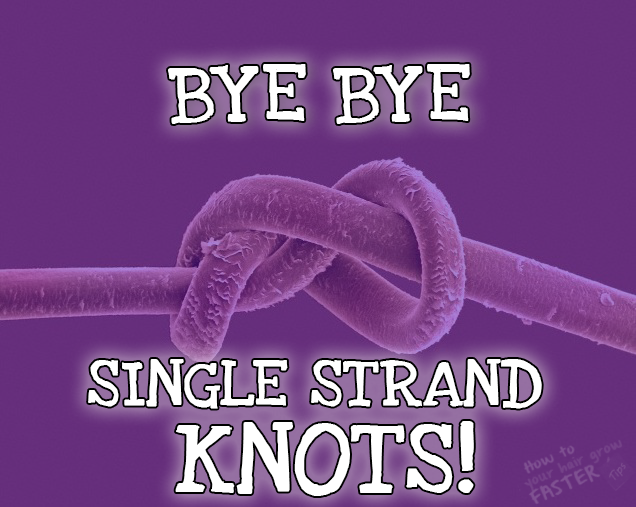
Hello lovelies,
In an effort to better serve my curly haired and highly textured readers, I’ve decided to bring on someone with unique, intimate, and first-hand knowledge of natural hair. This young lady is a fellow scientist and a good friend of mine with a lovely head of healthy, naturally curly hair of her own.
She’ll be blogging about the science of growing naturally curly hair and sharing tips to help our natural hair readers reach their long hair goals. So without further ado, take it away Tiana!
Hello again, lovelies!
As Renee said, my name is Tiana and I’m a long hair enthusiast who shares a unique love and passion for helping women with curly hair grow their beautiful tresses to healthier, longer lengths.
For my introductory article, I’d like to talk about something that has been the most significant and most annoying barrier to growing longer hair in my own hair growth journey — single strand knots.
Single strand knots, also known as fairy knots because they’re so small only a tiny fairy could have made them, are very small knots that occur at any point along the hair shaft when the hair strand wraps around itself forming a knot. These little knots have been my biggest source of frustration and many a setback in my long hair journey, and I know the same is true for other curly haired ladies–research tells me so. According to a study by the British Journal of Dermatology (Pages 169 – 173, 2006), if you have curly or tightly coiled hair, 10 to 15 percent of your entire head of hair contains knots at any given time. So this tells us two things. One, single strand knots are not a result of damage. So all of you ladies out there who thought you were doing something wrong, you can breathe a sigh of relief. Two, single strand knots are pretty much a natural, inherent feature of wearing our curly and tightly coiled hair in its natural state.
Now, while we may not be able to completely eliminate single strand knots, there are things we can do to greatly reduce them. We absolutely need to keep single strand knots to a minimum if we want to grow long, healthy hair, because these little knots can cause more damage, tangles, and lead to other knots.
Along my long hair journey, I went through a trial and error phase where I experimented with different styles and methods of caring for my hair to discover the best regimen to greatly reduce my single strand knots. Here are the methods I used to finally win the battle against single strand knots.
1. Don’t Big Chop!!!
Whaaat? What does the big chop have to do with single strand knots? In my case, it has plenty to do with it. Okay, so to be honest, I didn’t do the big chop. I had a very long (3 years), seamless, and quite simple transition from relaxed to natural hair. My transition was setback-free, and I was able to reached MBL before I cut off all of my relaxed ends.
Within weeks of celebrating my completely natural hair, I noticed the first of the natural hair gift that keeps on giving, single strand knots. I’d notice a couple one day, then a few days later I’d notice them all over my head. I’d cut them, and more would pop up, and within a few months, I went from MBL to bra strap length because I just couldn’t stand the feel of those little buggers in my hair. I couldn’t figure out what I was doing wrong to be suddenly plagued with so many knots. Then I realized, I hadn’t experienced single strand knots because my ends were completely straight. Straight ends don’t curl back onto themselves, hence no fairy knots during my transition, which led me to another epiphany. I probably would’ve never reached MBL if I did the big chop and didn’t have such a long transition.
So if your goal is to grow long, natural hair, and not to simply have natural hair, try to prolong your transition for as long as you can to make getting closer to your long hair goal as simple and as hassle-free as possible. If you’ve already done the big chop and want to prevent or currently suffer from single strand knots, the following tips are for you.
2. Keep Your Hair Lubricated
Notice I didn’t say keep your hair moist. Moisture is always a good thing for natural hair because we all know that dry hair tangles, snaps, and breaks, but it’s not enough to keep the hair moist or hydrated. Hydration is primarily beneficial for the inner workings of the hair shaft, meaning beyond the cuticle. Keeping the hair moist will prevent wear and tear like split ends and breakage, but your hair can reach max hydration and still form single strand knots. In order to prevent single strand knots, it’s important to keep the ends of the hair lubricated, i.e. coated with a penetrating oil or thick substance. I learned this handy tip from a fellow natural hair blogger, Vee Mack of CoilyQueens.
Coating the ends of the hair with an oil or thick substance like shea butter does two things:
1. It adds weight to the ends of the hair to keep them from curling up and back onto each other.
2. It keeps the individual strands of the hair so lubricated that they’re too slippery to curl around each other and form knots.
I’d recommend lubricating the ends of the hair with a just a teaspoon of oil (olive or coconut oil is fine) or shea butter every day to prevent single strand knots. Incorporate this technique into your hair care regimen and you should notice a significant difference in the amount of single strand knots that form in your hair within as little as seven days!
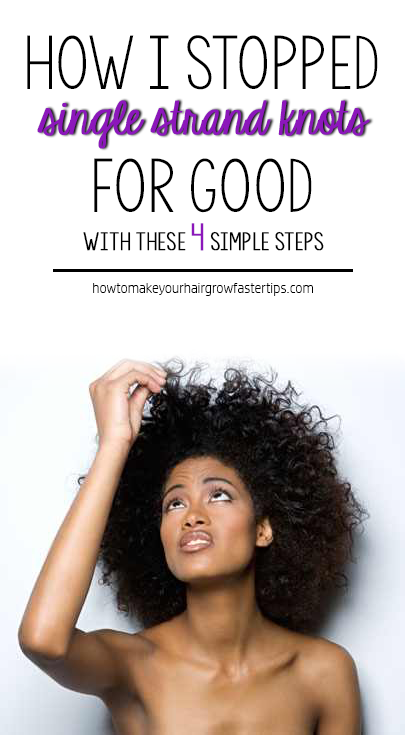 3. Keep Your Ends Stretched, Clumped, or Tucked Away
3. Keep Your Ends Stretched, Clumped, or Tucked Away
The ends of the hair are the oldest portion of your hair, so they tend to be the driest part of the hair shaft and most susceptible to damage in the form of single strand knots. Additionally, curly hair tends to get single strand knots because the ends tend to draw up, shrink, and curl around themselves because there’s not enough weight at the end of the hair strand to elongate the curls. It’s simply the nature of curly, highly textured hair.
The best way to prevent single strand knots from forming is to not even give the ends of your hair the opportunity to curl around themselves. Keeping your ends tucked away via protective hairstyles is the ideal way to keep your ends from tangling and forming single strand knots. Tucking away the ends protects them from too much physical manipulation and ensures that they don’t come in contact with other elements, such as blowing in the wind or rubbing up against a coat, that can make them prone to single strand knots.
Now keeping natural hair tucked away at all times to prevent single strand knots is not only impracticable, but it’s also unnecessary. The beauty of having natural hair is the endless number of ways we can style our hair, and single strand knots shouldn’t get in the way of us natural hair girls experimenting with our curls (You like that rhyme don’t cha!). If you want to wear your natural hair out more but still prevent single strand knots, keeping your ends stretched or keeping your hair clumped is the way to go.
When I say keep the ends stretched, I don’t mean straightening them with direct heat, but I do mean curling or stretching them with something like a roller or via specific hairstyle. Remember ladies, we want to style our natural locks in a heat-free manner. The main reason my hair never got single strand knots while I was transitioning was because my ends were completely straight or stretched. Stretching the ends via twist outs, braid outs, and twist and curl or braid and curl styles will allow naturals to switch up their look in between protective styles and keep single strand knots from forming.
If you don’t want to tuck away or stretch the ends of your hair, simply keep them clumped. A clump is essentially a finger coil or a loose spiral curl, which doesn’t provide the space individual strands of the hair need to form a single strand knot. Clumping creates a protective cocoon for the ends of the hair, which makes them stronger and less prone to matting and tangles. Clumping is often inherent in looser curly hair textures, such as a 3b, but naturals with tighter curls can force or enhance the amount of clumping in their hair with certain styling products and manual styling techniques. An additional benefit to clumping is the additional length or stretch the weight of the clumps add to the hair, which can further prevent tangles and single strand knots.
4. Keep your hands out of your hair
So if I’m going to keep it ![]() , the single strand knots I experienced didn’t just happen out of nowhere once I cut off my relaxed ends. To be truthful, I developed a nasty little habit that’s fairly common in the natural hair community. In fact, it’s so common, there’s a name for it: ‘Hand In Hair Syndrome.’ Fascinated and awestruck by the springiness and intricate shape of my curls, I would twirl, and twirl, and twirl the ends of my hair while reading, listening to music, or just drifting off into a daydream; the point is, I did it pretty often.
, the single strand knots I experienced didn’t just happen out of nowhere once I cut off my relaxed ends. To be truthful, I developed a nasty little habit that’s fairly common in the natural hair community. In fact, it’s so common, there’s a name for it: ‘Hand In Hair Syndrome.’ Fascinated and awestruck by the springiness and intricate shape of my curls, I would twirl, and twirl, and twirl the ends of my hair while reading, listening to music, or just drifting off into a daydream; the point is, I did it pretty often.
What I didn’t realize was all of that twirling did three things:
1. Everytime you touch your hair, you’re taking much needed moisture away from your strands. I know it doesn’t seem like it, but a twirl here, a tug there, it adds up to drier hair over time.
2. Drier hair and more manipulation equals frizz. My hair is naturally prone to frizz; just thinking about frizz makes my hair tangle, so you can imagine how tangled and knotted my hair becomes when I twirl it and play in it endlessly. Yes, I’m a glutton for punishment.
3. Tugging and twirling curly hair actually makes the hair shrink and the ends of the hair strands curl tighter and tighter around each other.
All three of these things combined provide the perfect condition for single strand knots to form. Similar to how you shouldn’t style your hair when you’re mad or in a rush, unconsciously playing in your hair is a big no-no for us natural hair ladies who suffer setbacks thanks to single strand knots. It not only leads to knots on knots on knots, it’s simply too much handling of the hair, which violates virtually every rule of growing long, healthy, natural hair.
So after I realized that constantly touching and twirling my hair was caused the majority of my single strand knots, I simply made peace with not being able to fondle my curls whenever I pleased and stopped twirling, right? WRONG! Why? Well we all know that habits are hard to break, and this one was particularly hard because who doesn’t love touching their hair? Especially when your hair is bouncy and springy, and just all around fun. And I was just getting to know my little curls, the contours and definition of each one, and suddenly I couldn’t explore them anymore? Oh well, good things always come to an end, but letting go can be tough.
It still took me a few months to accept that I was at the center of my single strand knot problem, and I finally I made a pledge to deal with my ‘Hand in Hair Syndrome’ head on. Every time I began to caress my curls, I’d simply lower my hand, breathe through it (yes, it was really that serious), and go find something else to do (I’d often take a walk or browse Facebook) until the urge to touch my hair faded away. After doing this a number of times, I made noticeable improvements with my ‘Hand in Hair Syndrome.’ Although I’m still recovering to be honest, I’m proud to say that I’m doing much better, and my hair is thanking me by forming fewer and fewer single strand knots.
I hope these tips help you ladies out there who’re struggling with single strand knots. If you’ve found a unique solution to your own single strand knot problem, please share it with us in the comments section below!
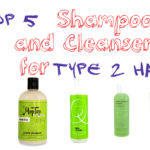
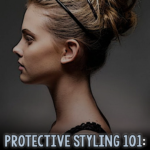
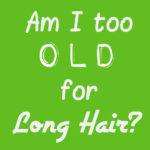
This site is really cool. I have bookmarked it.
Do you allow guest post on your site ? I can write high quality articles for you.
Let me know.
Thank you so much for this write up, I have been searching for the reason of my short frizzed knotted hair for months.
Though I rarely manipulate my hair but the shrinkage and knots cuts my hair so much hence preventing me from retaining length.
How do you lubricate ends daily to prevent knots, whilst keeping hair stretched and hands out of my head? You can do two of the three but not all 3 at the sane time